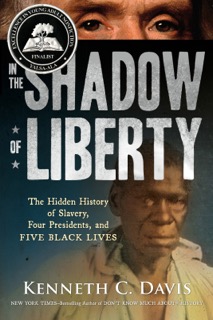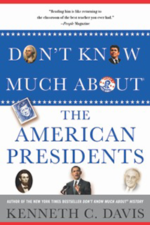(Post updated 6/20/2023)
Now that Juneteenth has become a national holiday observed as the other “Independence Day,” it is time to look back to the first Independence Day — July 4th, 1776.
As we approach Independence Day, we should rightly celebrate the ideas articulated in the nation’s founding document:
…that all men are created equal…
… they are endowed by their Creator with certain unalienable Rights, that among these are Life, Liberty and the pursuit of Happiness
… Governments are instituted among Men, deriving their just powers from the consent of the governed
Source: National Archives Declaration of Independence: A Transcription
These were radical ideas that changed the nation and the world. But as the nation is going through an examination of the role slavery played in American History, it is important to recognize its role to the Founders at Philadelphia.
You cannot teach American History without acknowledging the role slavery played. And talking about the men who signed the Declaration is one way to do that.
Read: “The American Contradiction: Conceived in Liberty, Born in Shackles” (Social Education, March/April 2020)
This is the first in a series of posts about the men who signed the Declaration of Independence and what became of them. Most of these men remain somewhat obscure. They have also been mythologized in some online forums. Many of them played a significant role in the early republic before, during, and after July 4, 1776. The entire series is posted in this site’s Blog category.
Slavery existed in all thirteen of the future states and at least 40 of the 56 signers enslaved people or were involved in the slave trade. One focus of the series is to show which of these men enslaved people or otherwise participated in the slave trade. A “YES” after their listing means they enslaved people; a “NO” means they did not.

Declaration of Independence (Source: National Archives https://www.archives.gov/founding-docs/declaration
…We mutually pledge to each other our Lives, our Fortunes, and our Sacred Honor.
Those strong words concluded the Declaration of Independence when it was adopted by the Continental Congress on July 4, 1776. Then what happened?
There is little question that men who eventually signed that document were putting their lives at risk. The identity and fates of a handful of those Signers is well-known. Two future presidents — Adams and Jefferson— and America’s most famous man, Benjamin Franklin, were on the Committee that drafted the document.
But the names and fortunes of many of the other signers, including the most visible, John Hancock, are more obscure. In the days leading up to Independence Day, I will offer a thumbnail sketch of each of the Signers in alphabetical order. Some prospered and thrived; some did not: How many of those Signers actually paid with their Lives, Fortunes, and Sacred Honor?
–John Adams (Massachusetts) Aged 40 when he signed, he went on to become the first vice president and second president of the United States.
Adams was very smart. But he misjudged the nation’s birthday. After Congress voted on a resolution in favor independence on July 2, he was convinced that would be a day of celebration:
“The Second Day of July 1776 will be the most memorable Epocha, in the History of America. . . . It ought to be solemnized with Pomp and Parade, with Shews, Games, Sports, Guns, Bells, Bonfires, and Illuminations from one End of this Continent to the other from this Time forward forever more.”
–John Adams to Abigail Adams, July 3, 1776 (National Archives)
By 1790, Adams was convinced that his place in the history to be written would be diminished.
“The history of our Revolution will be one continued lie from one end to the other,” he wrote fellow Founder Benjamin Rush in 1790.
“The essence of the whole will be that Dr. Franklin’s electrical rod smote the earth and out sprang General Washington. That Franklin electrified him with his rod –and thenceforward these two conducted all the policies,
Portrait of John Adams at age 88 by Jane Stuart, after Gilbert Stuart, 1824. (National Park Service)
negotiations, legislatures, and war.”
Adams died on the 50th anniversary of the Declaration in 1826 at age 90. (Jefferson died that same day) NO
The Adams house is a National Historical Park.
–Samuel Adams (Mass.) Older cousin to John, Samuel Adams was 53 at the signing. He went on to a career in state politics, initially refused to sign the Constitution because it lacked a Bill of Rights, and was governor of Massachusetts. He died in 1803 at 81. NO
–Josiah Bartlett (New Hampshire) Inspiring the name of the fictional president of West Wing fame on TV, Bartlett was a physician, aged 46 at the time of the signing. He helped ratify the Constitution in his home state, giving the document the necessary nine states to become the law of the land. Elected senator he chose to remain in New Hampshire as governor. Three of his sons and other descendants also became physicians. He died in 1795 at age 65. YES
–Carter Braxton (Virginia) A 39-year-old plantation owner, Braxton was looking to invest in the slave trade before the Revolution. Initially reluctant about independence, he helped fund the rebellion and lost a considerable fortune during the war — not because he was a signer, but because of shipping losses suffered during the war itself. He later served in the Virginia legislature and died in 1797 at age 61, far less wealthy than he had been, but also far from impoverished. YES
–Charles Carroll of Carrollton (Maryland) A plantation owner, 38 years old and one of America’s wealthiest men at the signing, Carroll was the only Roman Catholic signer and the last signer to die. With hundreds of enslaved people on his properties, Carroll considered freeing some of them before his death and later introduced a bill for gradual abolition in Maryland, which had no chance of passage. At age ninety-one, he laid the cornerstone of the Baltimore and Ohio Railroad as a member of its board of directors. He died in 1832 at age 95. YES
Update: Carroll’s cousin was John Carroll, a Jesuit priest, first Roman Catholic bishop in the United States, and a founder of Georgetown College. The New York Times has reported how, in 1838, Georgetown sold 272 enslaved people to keep the college financially afloat.



